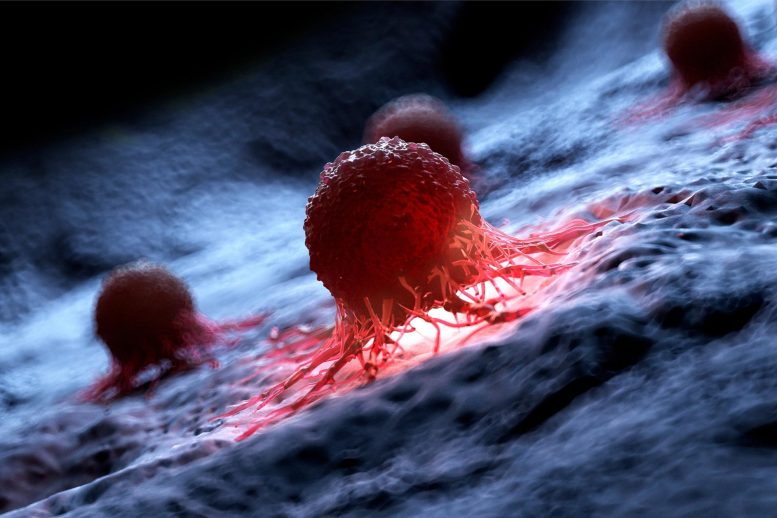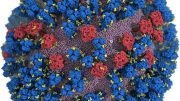
A new large study by the American Cancer Society reveals that incidence rates for various cancers, including breast and pancreatic, are rising across successive younger generations, alongside increasing mortality rates for cancers such as liver and colorectal in these groups. The research, analyzing data from millions of patients and deaths, underscores a generational shift in cancer risk, highlighting the need for targeted prevention strategies and policy advocacy to address rising cancer burdens among younger populations.
Recent findings from an American Cancer Society study show rising cancer rates among younger generations, with increases in incidence and mortality across multiple cancer types. This generational shift in cancer risk highlights the critical need for targeted health interventions and improved access to healthcare.
A recent comprehensive study conducted by the American Cancer Society (ACS) indicates that incidence rates for 17 of the 34 studied cancer types, such as breast, pancreatic, and gastric cancers, have been increasing in progressively younger populations. Additionally, the study found that mortality rates have risen alongside the incidence rates for specific cancers, including liver (in females only), uterine corpus, gallbladder, testicular, and colorectal cancers. The findings were recently published in the journal The Lancet Public Health.
“These findings add to growing evidence of increased cancer risk in post-Baby Boomer generations, expanding on previous findings of early-onset colorectal cancer and a few obesity-associated cancers to encompass a broader range of cancer types,” said Dr. Hyuna Sung, lead author of the study and a senior principal scientist of surveillance and health equity science at the American Cancer Society. “Birth cohorts, groups of people classified by their birth year, share unique social, economic, political, and climate environments, which affect their exposure to cancer risk factors during their crucial developmental years. Although we have identified cancer trends associated with birth years, we don’t yet have a clear explanation for why these rates are rising.”
Study Methodology and Detailed Findings
In this analysis, researchers obtained incidence data from 23,654,000 patients diagnosed with 34 types of cancer and mortality data from 7,348,137 deaths for 25 types of cancer for individuals aged 25–84 years for the period Jan 1, 2000, to Dec 31, 2019, from the North American Association of Central Cancer Registries and the U.S. National Center for Health Statistics, respectively. To compare cancer rates across generations, they calculated birth cohort-specific incidence rate ratios and mortality rate ratios, adjusted for age effect and period effect, by birth years, separated by five-year intervals, from 1920 to 1990.
Researchers found that incidence rates increased with each successive birth cohort born since approximately 1920 for eight of 34 cancers. In particular, the incidence rate was approximately two-to-three times higher in the 1990 birth cohort than in the 1955 birth cohort for pancreatic, Kidney, and small intestinal cancers in both male and female individuals; and for liver cancer in female individuals.
Additionally, incidence rates increased in younger cohorts, after a decline in older birth cohorts, for nine of the remaining cancers including breast cancer (estrogen-receptor positive only), uterine corpus cancer, colorectal cancer, non-cardia gastric cancer, gallbladder cancer, ovarian cancer, testicular cancer, anal cancer in male individuals, and Kaposi sarcoma in male individuals. Across cancer types, the incidence rate in the 1990 birth cohort ranged from 12% for ovarian cancer to 169% for uterine corpus cancer higher than the rate in the birth cohort with the lowest incidence rate. Notably, mortality rates increased in successively younger birth cohorts alongside incidence rates for liver cancer (female only), uterine corpus, gallbladder, testicular, and colorectal cancers.
Implications and Future Concerns
“The increase in cancer rates among this younger group of people indicates generational shifts in cancer risk and often serves as an early indicator of future cancer burden in the country. Without effective population-level interventions, and as the elevated risk in younger generations is carried over as individuals age, an overall increase in cancer burden could occur in the future, halting or reversing decades of progress against the disease,” added Dr. Ahmedin Jemal, senior vice president, surveillance and health equity science at the American Cancer Society and senior author of the study. “The data highlights the critical need to identify and address underlying risk factors in Gen X and Millennial populations to inform prevention strategies.”
“The increasing cancer burden among younger generations underscores the importance of ensuring people of all ages have access to affordable, comprehensive health insurance, a key factor in cancer outcomes,” said Lisa Lacasse, president of the American Cancer Society Cancer Action Network (ACS CAN). “To that end, ACS CAN will continue our longstanding work to urge lawmakers to expand Medicaid in states that have yet to do so as well as continue to advocate for making permanent the enhanced Affordable Care Act tax subsidies that have opened the door to access to care for millions.”
Reference: “Differences in cancer rates among adults born between 1920 and 1990 in the USA: an analysis of population-based cancer registry data” by Hyuna Sung, Chenxi Jiang, Priti Bandi, Adair Minihan, Miranda Fidler-Benaoudia, Farhad Islami, Rebecca L Siegel and Ahmedin Jemal, August 2024, The Lancet Public Health.
DOI: 10.1016/S2468-2667(24)00156-7








Be the first to comment on "New Study Reveals Disturbing Rise in Cancer Among Gen X and Millennials"